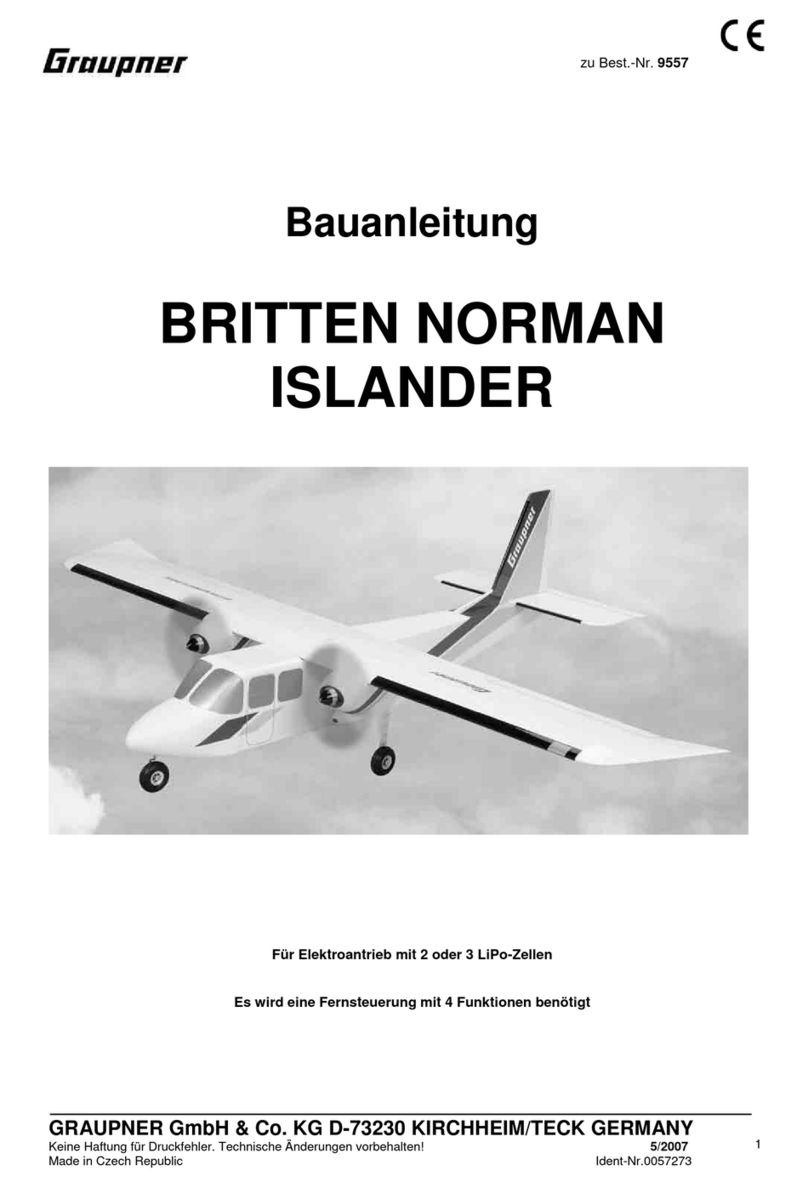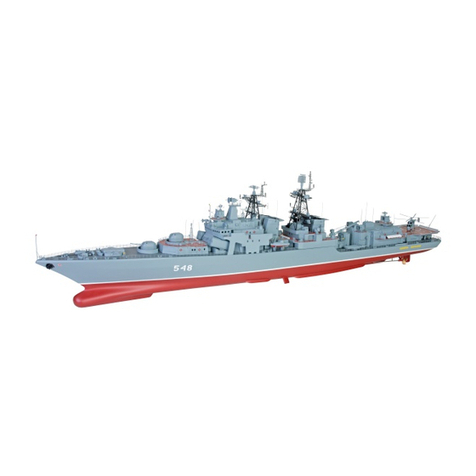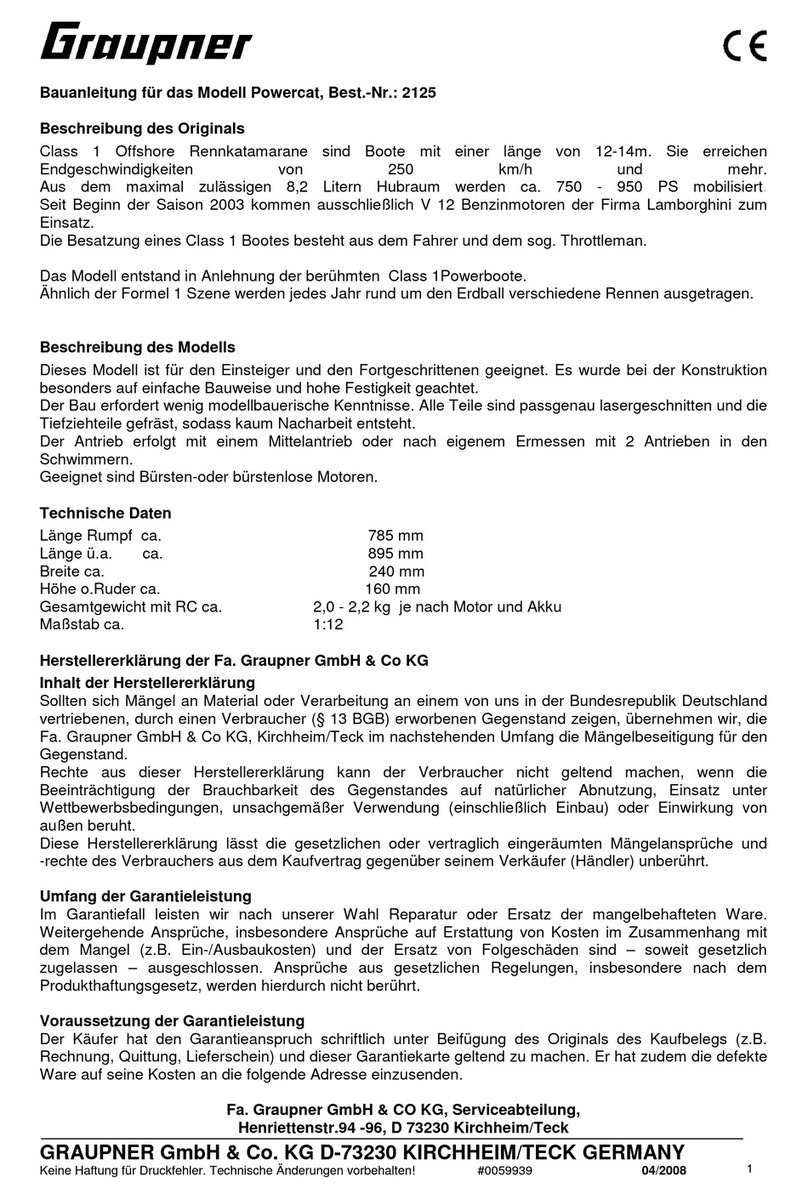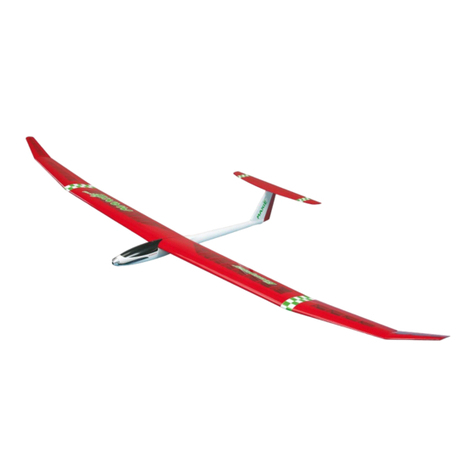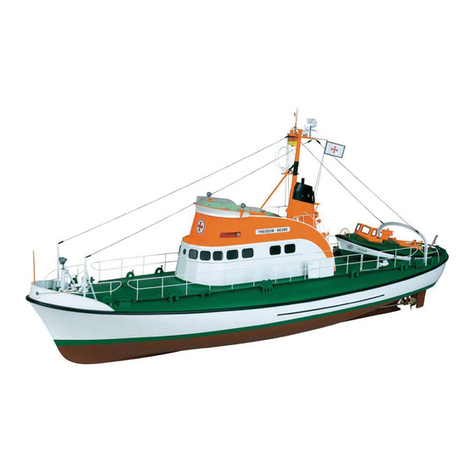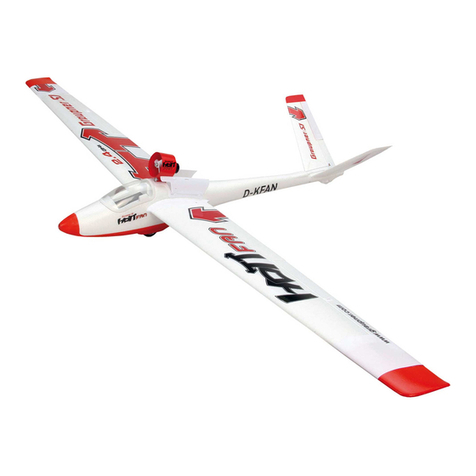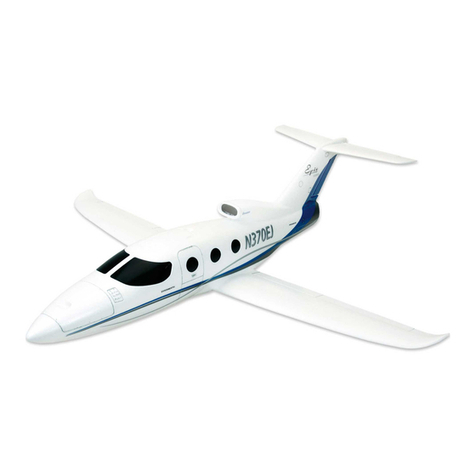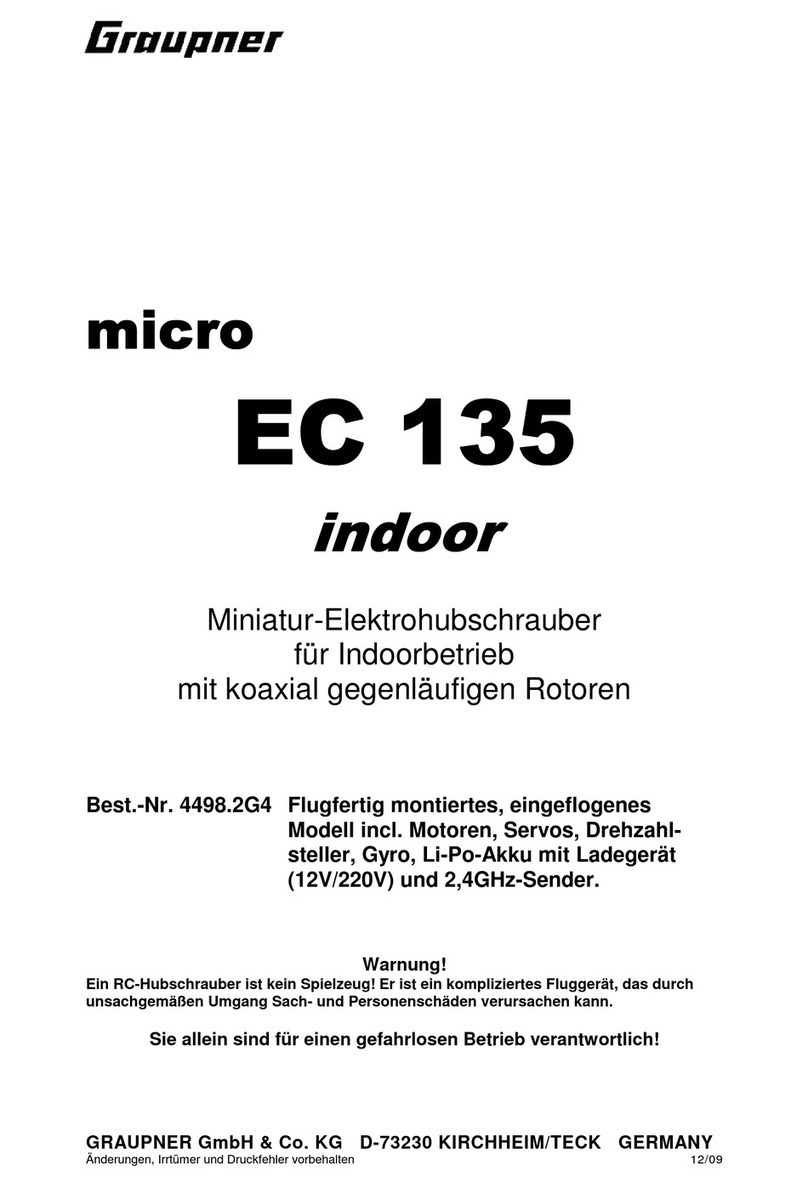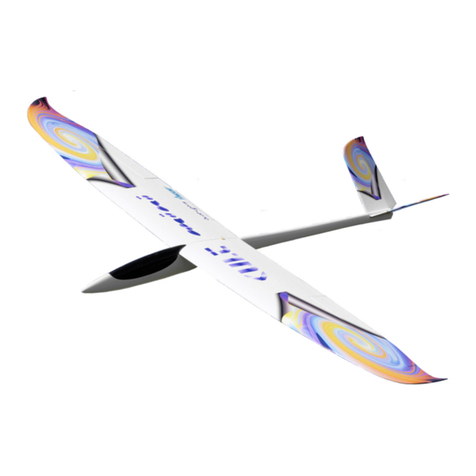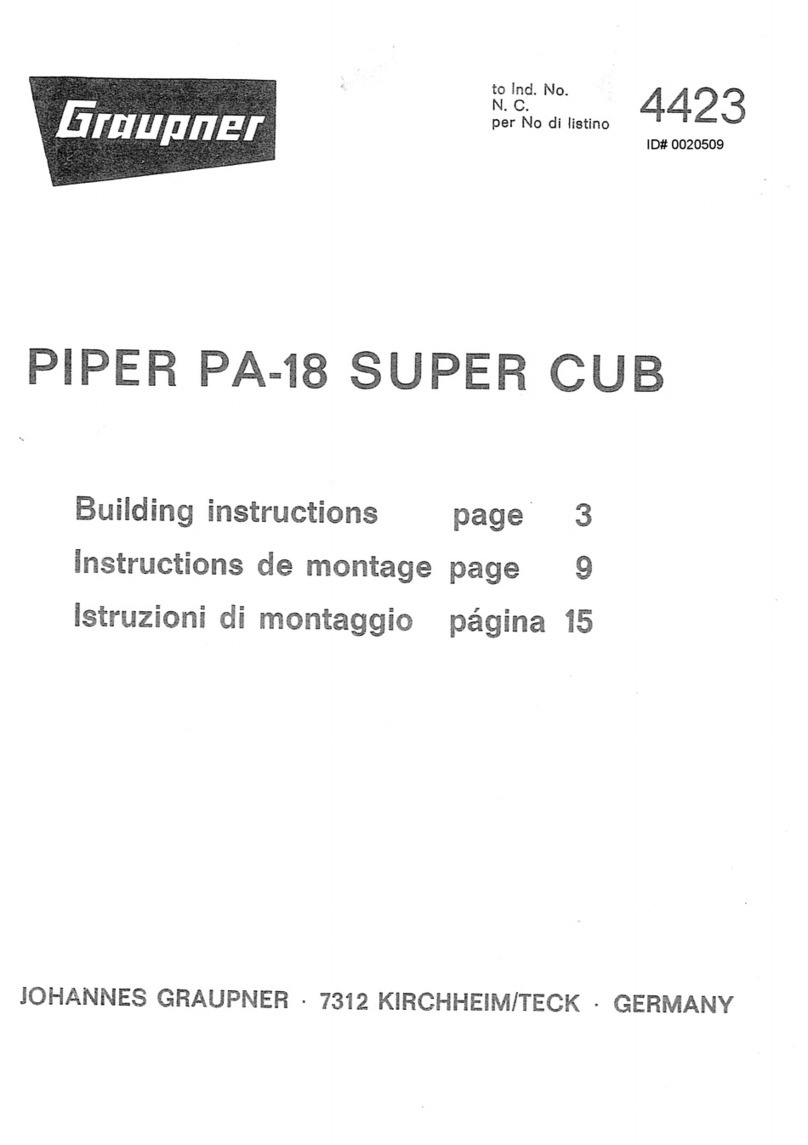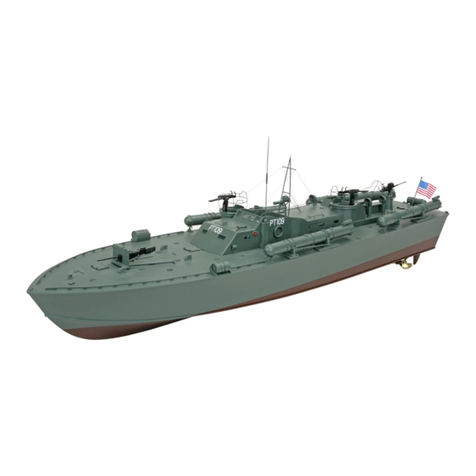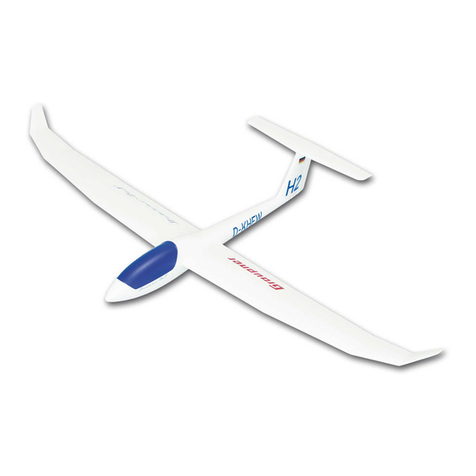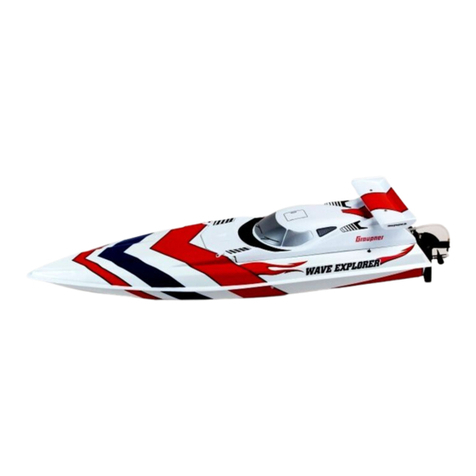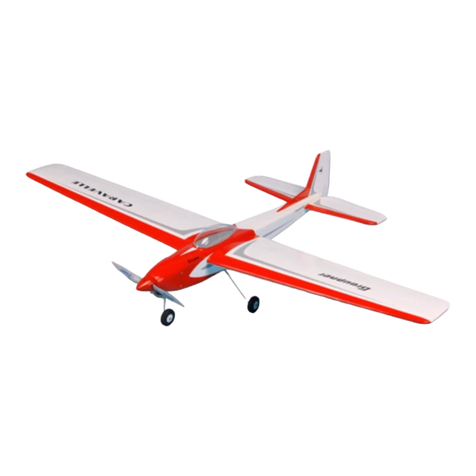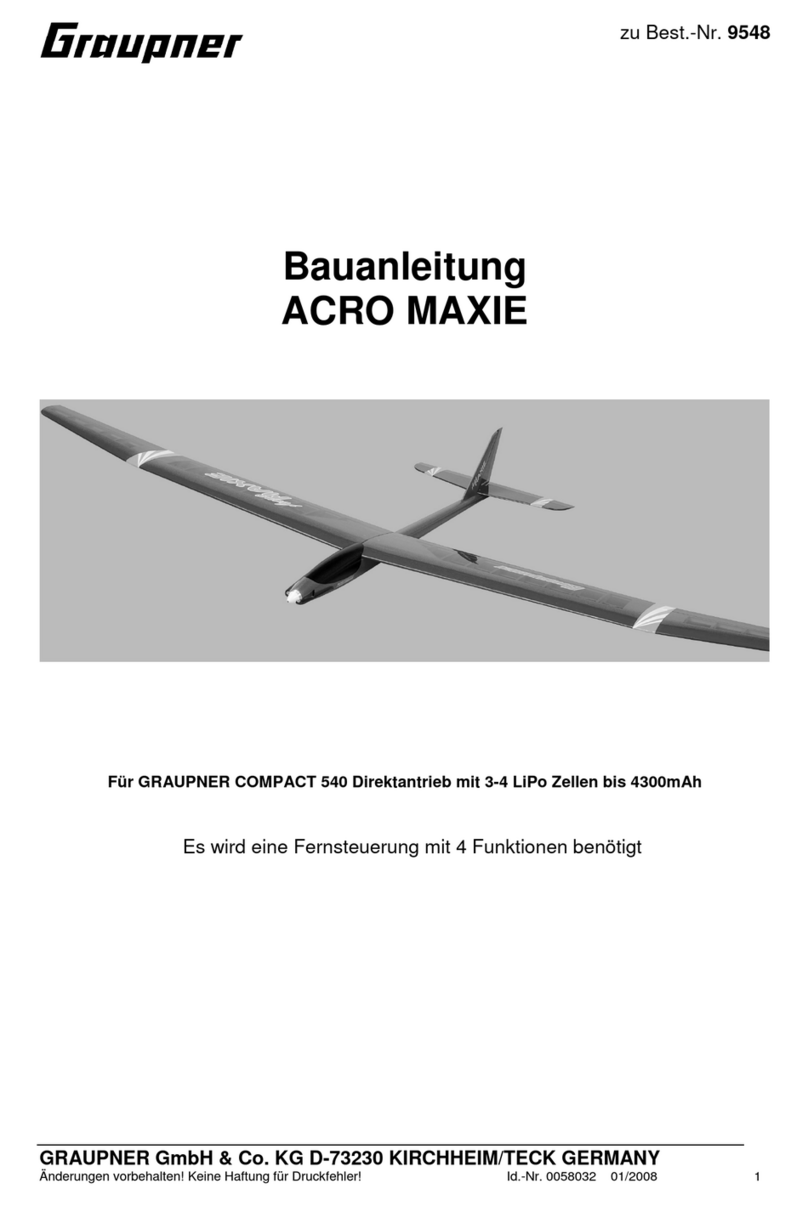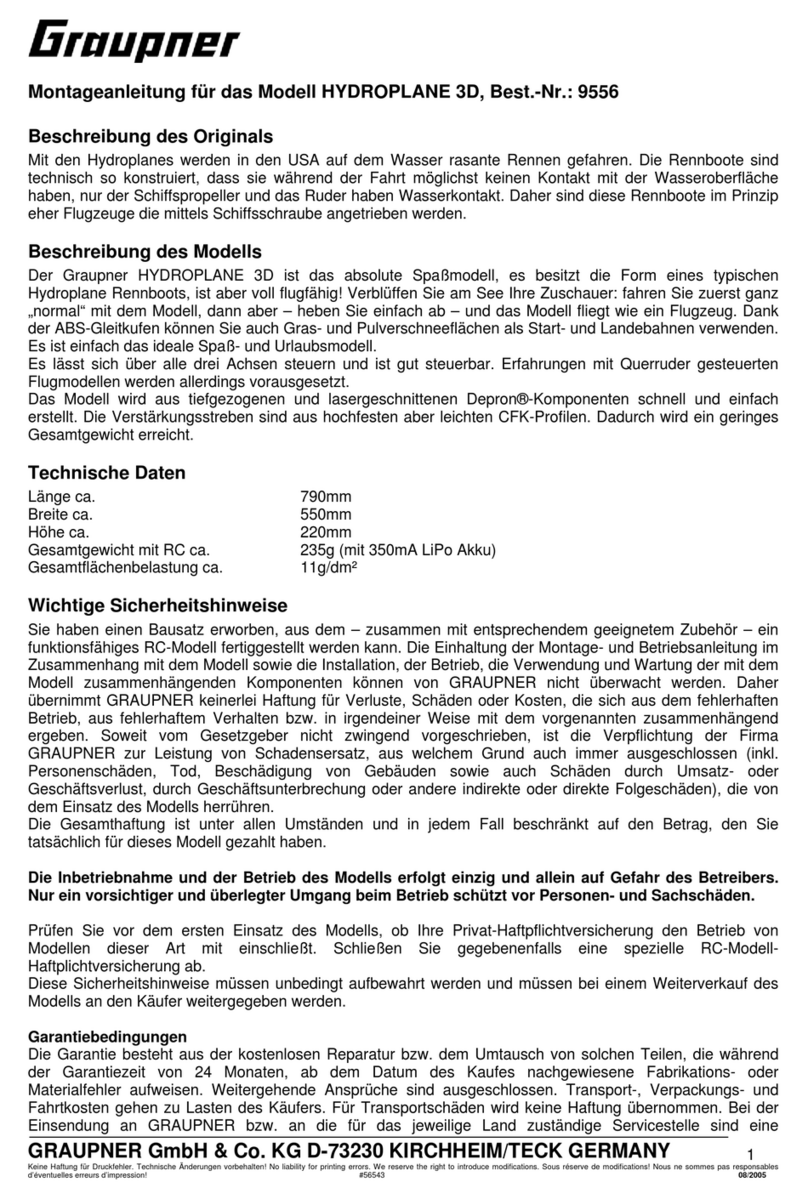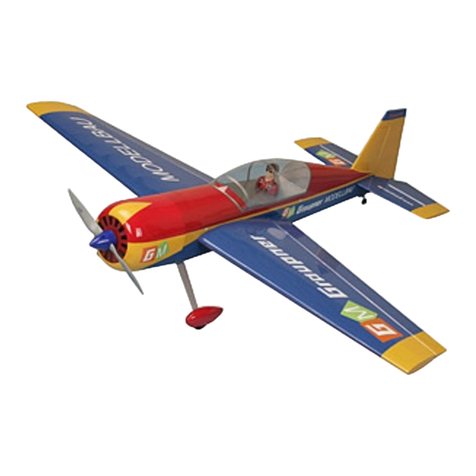GRAUPNER GmbH & Co. KG D-73230 KIRCHHEIM/TECK GERMANY
We reserve the right to introduce modifications. Not liable for printing errors!
11/2011
- 2 -
Please be sure to observe the safety notes attached to these operating instructions. If the
model is passed on to others, the complete operating instructions must also be passed on to
and observed by them.
General
The model SEA FURY is a particularly beautiful RC semiscale model, which, thanks
to its compact dimensions, is easy to transport. However, the small dimensions
should not mislead you into thinking that the assembly and operation of the model
does not require sound model aircraft experience. The model is extensively pre-
assembled. The assembly steps described in the following must be carried out with
the greatest of care to ensure safe and successful use of the model. The all-up
weight may not exceed 1000 g.
RC accessories (not included)
The accessories listed in the following are required for the assembly and operation of
the model.
MX-16 COMPUTER SYSTEM 2.4 GRAUPNER HoTT Order No. 33116
Transmitter charger cable Order No. 3022
Electric retractable undercarriage (mechanism) 2 units Order No. 193.3
Connecting cable for retractable undercarriage Order No. 3936.32
Brushless Motor COMPACT 345Z Order No. 7738
ELEKTRO PROP 10x5” Order No. 1326. 10x5
GRP Propeller Spacer Order No. 197.60
COMPACT CONTROL 45 Order No. 7224
LiPo 2/1600 7.4 V/1.6 Ah Order No. 7634.2
G 3.5 Charger Cable Order No. 2970.L
Charger ULTRAMAT 16 S Order No. 6468
Servo DES 476 BB (6 required) Order No. 7915
Servo Extension Cable 100 mm (4 required) Order No. 3935.11
Servo Extension Cable 320 mm (2 required) Order No. 3935.32
Hook-and-Loop Cable Tie Order No. 1587
Required tools and adhesives (not included)
Balsa Knife Order No. 980
Fast Setting Glue Order No. 5821
Activator for Fast Setting Glue Order No. 953.150
UHU ALL PURPOSE ADHESIVEPower Order No. 1096
You will also need the following items: Philips screwdriver, open-end spanner SW 12,
flat-nose pliers, wire cutter, drill Ø 1.6, Allen wrenches SW 1.5 and SW 2.5 mm,
soldering gun and solder, hair dryer, sandpaper, geometric protractor, overhead
marker, transparent tape, wood pulp paper, protective gloves, safety glasses.
Assembly instructions
Please read these building instructions completely before you start building, so that
you have a clear idea of the sequence required. Before each stage, identify all the
parts, tools and adhesives you will need, and have them ready. When working,
always lay the parts on a clean, smooth surface, or a layer of foam material. Unless
the instructions specifically state otherwise, use fast-setting glue with activator as
adhesive. The best method is to apply glue to one face, then spray activator on the
